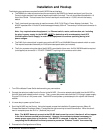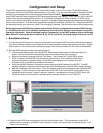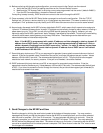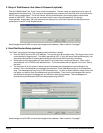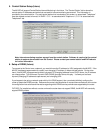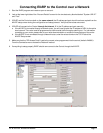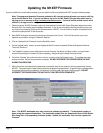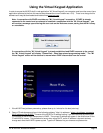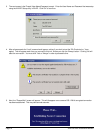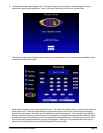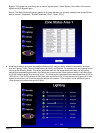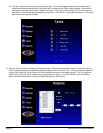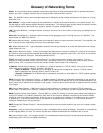
ELK-M1XEP Installation Manual
Page 19
Glossary of Networking Terms
Router- A communications device between networks that determines the best path between them for optimal performance.
Routers are used in complex networks such as enterprise-wide networks and the Internet.
Port - The identifier used by Internet transport protocols to distinguish among multiple simultaneous connections to a single
destination host.
MAC Address - unique number assigned by the manufacturer to identify each network interface on all network devices. The
first few digits of a MAC address typically identify the manufacturer. The remaining digits uniquely identify the specific interface
on that individual device. Also known as a "physical" address. (Example: 00409D:256EC0)
LAN (Local Area Network) - a computer network covering a local area, like a home, office or small group of buildings such as
a college.
WAN (Wide Area Network) - a computer network covering a wide geographical area, involving vast array of computers. The
best example of a WAN is the Internet.
ISP (Internet Service Provider) - provides access to the Internet for others via some connectivity service(s). This might be in the
form of dial up services, web hosting services or the combination of both.
DSL (Digital subscriber line) - type of broadband connection that brings information to homes and businesses over ordinary
copper telephone lines.
URL (Uniform Resource Locator) - A string of characters that represents the location or address of a resource on the Internet
and how that resource should be accessed. World Wide Web pages are assigned a unique URL. Also known as an Internet
address or web address. (Example: http://www.elkproducts.com/)
TCP/IP (Transmission Control Protocol/ Internet Protocol) - the basic communication protocol of the Internet. This is a
standard for routing and data transfer around the world. The Internet Protocol is a connectionless protocol which provides
packet routing. TCP is connection-oriented and provides reliable communication and multiplexing.
IP Address (Internet Protocol Address) - the address of a computer attached to a TCP/IP network. Every client and server
station must have a unique IP address. (Example: 192.168.0.1)
"Static" IP Address - a permanent or non-changing IP address that is assigned to a node in a TCP/IP network.
Static IP addresses are generally used for servers, routers, etc.
"Dynamic" IP Address - an IP address that is automatically assigned to a client station in a TCP/IP network, typically
by a DHCP server.
DHCP (Dynamic Host Configuration Protocol) - a standard method for assigning IP addresses automatically to the devices on
a TCP/IP network. As a new device connects, the DHCP server assigns an IP address from a list of available addresses. The
device retains this IP address for the duration of the session. Once the device disconnects the IP address becomes available
for use again.
DNS (Domain Name System) - A DNS server lets you locate computers on a network or the Internet (TCP/IP network) by
domain name. The DNS server maintains a database of domain names (host names) and their corresponding IP addresses.
DDNS (Dynamic Domain Name System) - Dynamic DNS is a system for allowing an Internet domain name to be assigned to
a varying IP address. This makes it possible for other sites on the Internet to establish connections to the machine without
needing to track the IP address themselves. A common use is for running server software on a computer that has a dynamic
IP address (e.g., a dial-up connection where a new address is assigned at each connection, or a DSL service where the
address is changed by the ISP occasionally).
SMTP (Simple Mail Transfer Protocol) - Internet standard protocol used to transfer electronic mail from one computer system
to another.
Encryption - process of obscuring information to make it unreadable without special knowledge. Information is converted into
a code language before it is sent. The receiver has the same software and decodes the information after it arrives.
SSL (Secure Socket Layer) - An encryption protocol for transmitting documents securely over the Internet by electronically
authenticating each end of an encrypted transmission.



